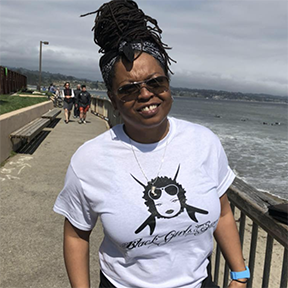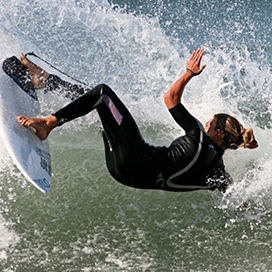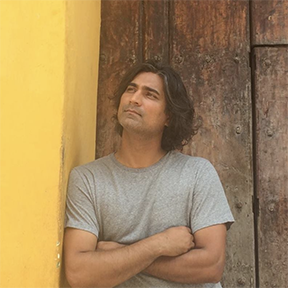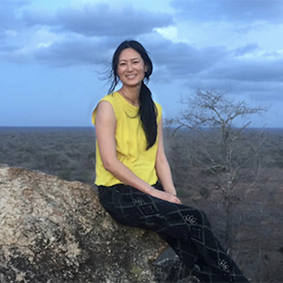
The Future of Surfing is Diverse
By Joyce Hu
Knowing the indigenous origin of surfing is key to understanding surfing’s race and gender norms. Surfing was first practiced by indigenous cultures in Polynesia, the west coast of Africa, and Peru. When European explorers (i.e. James Cook) arrived, they violently eradicated surfing traditions from these cultures in order to dominate and enslave the local people. Later on the main land, colonial and commercial activities from the Spanish missionaries to the gold rush decimated coastal indigenous populations.
America was founded on stolen land violently taken from Native Americans and built on the backs of enslaved Africans. Racist laws and beliefs created by those in power have kept this system of dominance in place for hundreds of years. In contemporary America, confronting the shame of this truth would require those at the top to give up power.
Maintaining this racial hierarchy through both institutionalized racism and racist actions has shaped almost every aspect of American life, including surfing.
"From the very beginning, surfers have been blissfully unaware — or perhaps unconcerned — that their beloved sport was founded on a history of indigenous erasure, in both Hawaii and California." Read a more detailed history by Native American Journalist, surfer and writer Gina Gilio-Whitiker.
Access to surfing thereafter has been controlled by straight white men. The rise of surfing in the 20th century was driven by white land developers who used the romance of surfing and Hawaiian surfers (like Duke Kahanamoku) to promote coastal developments and tourism. The boom in coastal property values further removed indigenous people from their rightful land.
As the surf industry grew, the sport was systematically kept from indigenous people and minorities. During segregation, one black surfer stood out. Nick Gabaldon, the first documented black surfer, had to paddle 12 miles from Inkwell — a black-only beach in Santa Monica — to surf white-only Malibu.
Mainstream surf media throughout the years from Gidget to Roxy embedded and perpetuate sexism and monoculture. Movies like Endless Summer cemented a colonial and racist mentality to surf travel.
Moreover, socioeconomic realities created by institutionalized racism feed the culture that keeps blacks and other people of color off the California coastline ("surfing, that's white people shit"). The exceptions to this must outdo all others — and only then might they shift the trajectory of culture, like Buttons Kaluhiokalani, whose revolutionary surf style in the 1970s launched modern surfing.Surfing already has unique physical barriers for entry. A beginner surfer must be a strong swimmer with consistent access to the ocean and disposable funds for a surfboard and other gear. Learning and following the complex rules of surf etiquette is a crucial matter for everyone’s safety. Navigating localism can be a deterrent for any surfer at any level.
Despite these factors, more people of color are starting to surf. In the last 10 years with smartphone and social media access all over the world, the actual sight of brown and gay people surfing is no longer novel. Alternative and local surf communities are growing around the world and indigenous coastal communities are reclaiming their surf history. Most relevant is the shifting ethnic makeup of the United States.
The question today is, when will the professional surf world and mainstream surf brands (and American mainstream media) change to reflect this new and fast-changing reality?
"For young people today, nothing feels faker and off-key than perpetuating a monochromatic world that doesn’t sync up to the beautifully colorful nation they live in. For any brand today, surfing or not, inclusion and diversity must be a conscious, proactive—and yes, maybe even forced—decision. Not just because it’s the human thing to do, the moral thing, the American thing." - Bobby Kim of Hundreds has some thoughts on mainstream surf brands needing to catch up.
We wanted to tackle these very topics with surfers in our Bay Area community so on Thursday, November 15th, we dove in deep. We hosted Diversity in Surf, a panel discussion with local surfers who span multiple cultures to thrive in a class of their own.
We filled Traveler Surf Shop in Pacifica with allies of all colors and orientations who were craving to tell and hear different stories from the mainstream, to change and take control of the surf narrative. Proceeds of the event went to City Surf Project.
If you missed it, watch the long edit here:
Watch edited version by Dayla Soul here.
Thank you to Dayla Soul, director of It Aint Pretty, for filming the event.
--------------------------------------------------------
PANELISTS:
| Rhonda Harper is a real live version of Dorothy from Kansas who followed her yellow brick road to the shores of Santa Cruz, CA. Her seemingly never ending journey to find Oz has led her to some of the most interesting career choices. From celebrity designer, Silicon Valley executive, the US Coast Guard, surf journalist and contest organizer/commentator her lifelong passion for surfing led to activism to advance black surfers worldwide. Black Girls Surf, her current labor of love, is training African female surfers including Khadjou Sambe who was recently featured in Outside Magazine to qualify for the first Olympic Games surf competition in Japan 2020. DONATE AND GET THE GIRLS TO 2020 |
|
|
Kyla Langen photo: Jetty Girl |
Kyla Langen has been riding waves since she could walk, and lifeguarding and teaching surfing for 20 years. Surfing professionally for 12 years, she swam upstream as a gay women in a heteronormative, patriarchal surf industry. Because of her experiences and limitations in the surf industry she started teaching to diversify the water. Kyla believes in the healing, empowering magic of the ocean and wants all people to have access to it. |
|
Natasha Brown
Educator
Photo Mancy Gant |
Natasha Brown is a surfer and educator from New York City. Her passion for surf started at a young age, and grew into a lifestyle. After living in Costa Rica and surfing amongst a diverse lineup, it has been a personal goal of hers to use her voice to advocate for more diversity in the lineup here in the United States. She strongly feels that surfing can offer a space of healing from the trauma people of color face by just existing. Her main goal is to share the feeling of freedom in the water with all that are open to receiving. Check out her newly launched blog: Surfing While Black. |
|
Manav Thapar |
Plant-based food start-up entrepreneur, adjunct faculty at SFSU, and sports psychology consultant. Manav is an avid outdoorsman and adventure traveler. Rock climber, snowboarder and surfer, with gratitude, a seeker of truth, inclusiveness & justice and a lifelong learner. |
|
Moderated by Joyce Hu |
Never having been on a surfboard, Joyce Hu was thrown into the deep end of the surf world when she met her husband Josh, a surfer eco-activist. She brought her experience in ethical fashion to launch their joint project, Marlin Ray, a fair trade beach goods brand. Being a person of color and an outsider, the lack of diversity in surfing was especially striking to Joyce. She was moved to represent a more diverse surf brand. Both Joyce and Josh are committed to using Marlin Ray as a channel to inspire inclusion and radical sustainability within the surf community and beyond. Check out her other conservation job at Wildlife Works and ethical fashion group Sustainable Fashion Alliance. |





